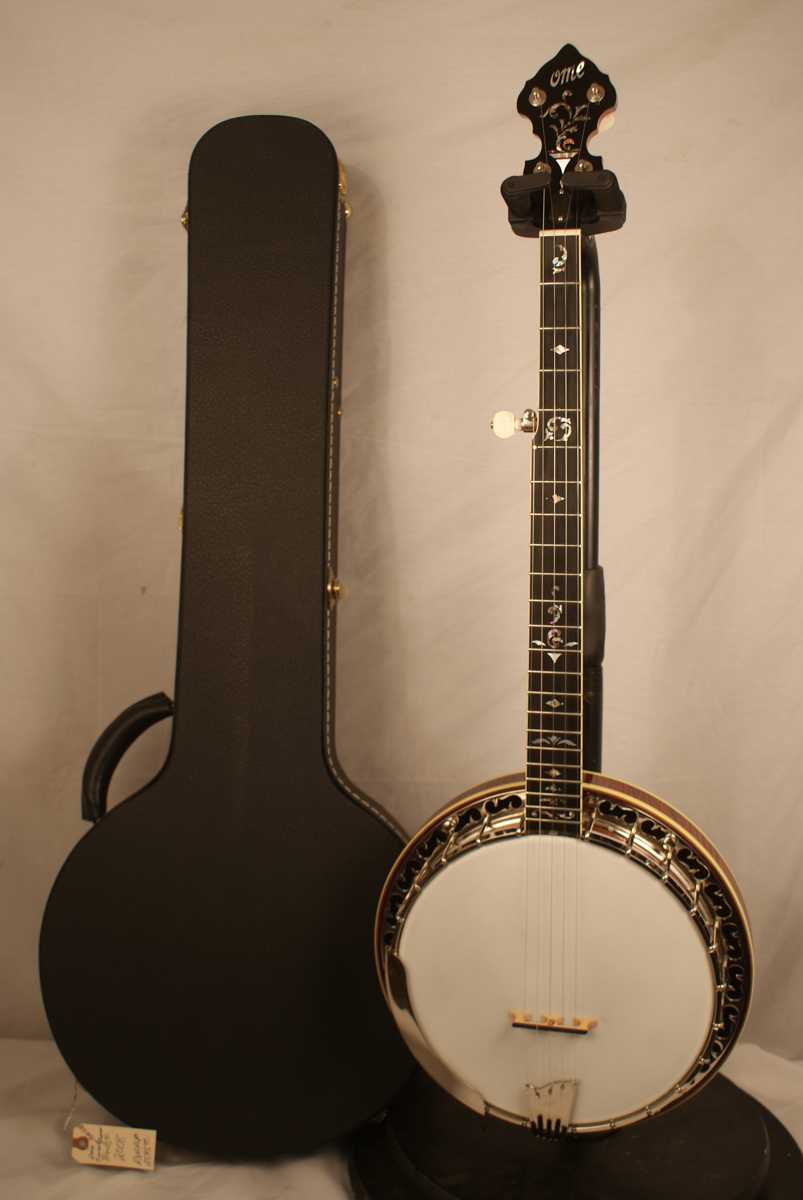

(3) Gretsch (3) Home-made (1) Huss and Dalton (1) J. (1) Dogwood Banjos (1) Dopera Original (1) Encore (1) Farland (1) G. (1) Dale Small (2) Davis (3) Ditson / Victory ma. (1) Conqueror (1) Conrad (1) custom made by Ron. Lennox (1) Clifford Essex (1) Companion (1) Companion Custom Ba. (1) Any make (1) (1) Banjo-ette (1) Bay State (1) Belltone (1) Bob Thornburg (1) Bryce by Virginia L. But once you find the one you like, if it is either an Ome or a Lee you will be happy with the banjo.? (12) Aaron Tacke (2) Antique English Tun. Arrrgh, I always used to hate it when folks told me this, but you just have to play them until you find the one that sounds like what you are looking for - or at least close, since you can fine-tune with changes to the head/bridge/tailpiece. and I find the Lee plain wood tone ring (actually the head sitting on the wood rim) is a good deal brighter than the 12" Ome was.

My Lee 12" is brighter than the old 12" Ome and sounds great with a Ren. A while back I had a 12" Ome Jubilee in walnut with the plain brass rod tone ring and it was wonderfully plunky and deep - really rattled your guts when you played it.

Tubaphone, Whyte Laydie (I have Reiter versions of both as well) - I guess to me the Ome just fits what a banjo should sound like. I guess if I had to have just one it would be the Ome - not just because it is so absolutely fine, but also because I find the tone and volume of the 11" Silverspun to be the best all around - vs. Like others have said both are fine banjos. The Ome I have now (5th I have had over the years) is a 11" Magician with the sliverspun tone ring. Well, I am lucky enough to have both - my Lee is a custom, 12" with the plain wood tone ring. The pop-on resonator allows me to switch playing styles fast and no-fuss.īut if I were you, I would keep the Romero if you decide on the Ome- both would really cover all the bases for you. The Ome can still be fixed by the guys who made it, and the Bacon can't. I have been very seriously thinking of buying an Ome w/ pop-on as a replacement to take out in public. But it's still an old banjo- fine and sturdy and irreplaceable. The tone ring is a great one for either style of playing. I found a couple of years ago that I liked the tone of it open-backed better, as do a lot of my open-backed friends. I own an original Silver Bell, and played it for over 20 years with it's resonator on the banjo. If you find that playing over the neck is going to be an integral part of your style, you could send the Ome back to the factory for a scoop job at any time without hurting the banjo's originality or value. Another advantage the Ome has is the availability of a pop-on resonator if you ever want to go that way or find the need for higher volume than an open back can deliver. While they're both excellent banjos, given your questions, I favor the Ome. Personally, I think the Ome has more capacity for intricate work from both hands than the Lee. The Ome's neck is very sleek and well proportioned. Your Romero is more like the Lee than the Ome. I find the Lee neck very comfortable, but I play 3-finger as much as stroke style, and found the heavy neck slowed me up in 3-finger playing. The neck thickness, for me, is as much a factor as the scoop. You may find that a fully fretted board can still be played over the neck as easily as a scooped board. You may find that moving your right hand over the head will provide the extra volume and sparkle that your current banjo may already have. This applies particularly to the scooped neck- you may find that your current interests change, and there may be a time when you want those extra frets more than the scoop. The toughest part about buying a new banjo is looking at where you might want to go with your progress, not what brought you to the place you are now. The Lee rim is much different in many other aspects as well. The Ome can be quite bright, but their tone can be deepened. The Lee will have the volume, for sure, but by design, they have a deeper, less penetrating tone. They are simply much different banjos that share a similar tone ring.


 0 kommentar(er)
0 kommentar(er)
